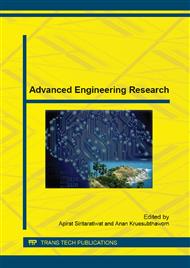p.620
p.624
p.628
p.632
p.637
p.643
p.647
p.651
p.655
Incomplete Nucleic Acid Sequences Visualization: A Case Study in Virus Sequences
Abstract:
Dengue virus (DENV) is one of the most widespread infectious diseases in the world, especially in the South East Asian regions. Transmitting the virus through mosquitoes, Dengue is an infectious viral borne disease. The virus sequences are assembled as series of nucleic acid, making the task of diagnosing virus sequences burdensome. Graphical representations are then proposed to represent Dengue virus to sustain the studies in virus sequences diagnosis. However, graphically representing sequences remained a crucified task especially for the incomplete genome sequences due to the missing nucleic acids. Although a number of studies provide methodologies on virus sequence visualization, in Dengue virus researches, those methodologies provide the visualization solely for complete genome sequences while neglecting the incomplete genome sequences. With the unaccommodating availabilities of research inputs, our study proposes a methodology for graphically representing the incomplete Dengue virus sequences, as well as complete virus sequences, by imputing in the incomplete part of a sequence with created reference sequences. The proposed methodology employs the use of database technology and majority voting technique to create reference sequences for each serotype of Dengue. Experimental results show that incomplete sequences are visualized realistically according to its respective serotype, thus providing flexibilities in Dengue virus researches to compensate incomplete sequences as inputs.
Info:
Periodical:
Pages:
637-640
Citation:
Online since:
August 2015
Price:
Сopyright:
© 2015 Trans Tech Publications Ltd. All Rights Reserved
Share:
Citation:


